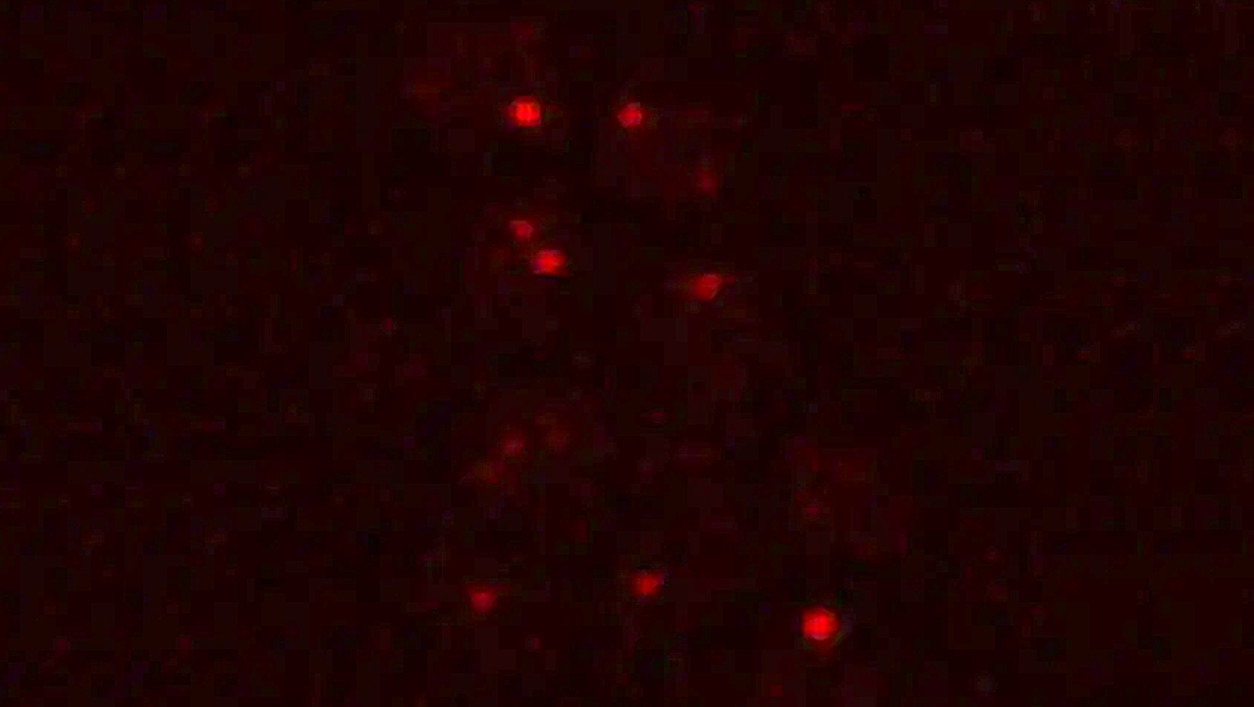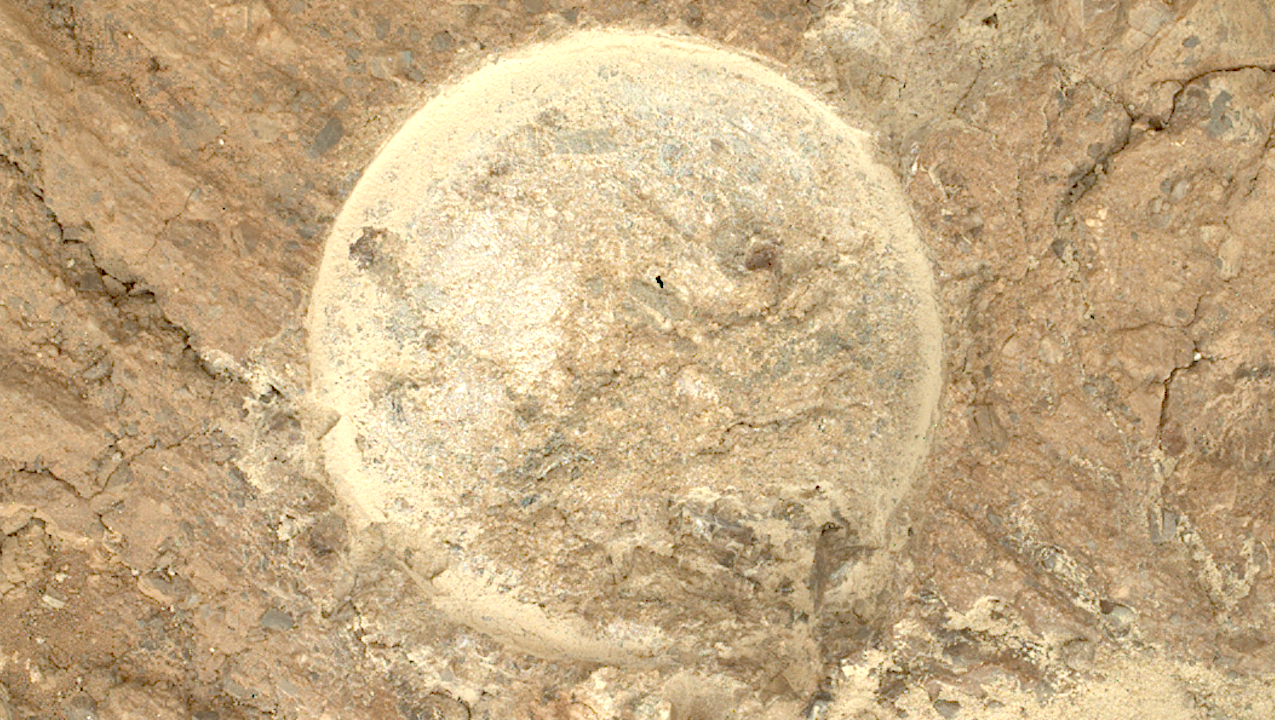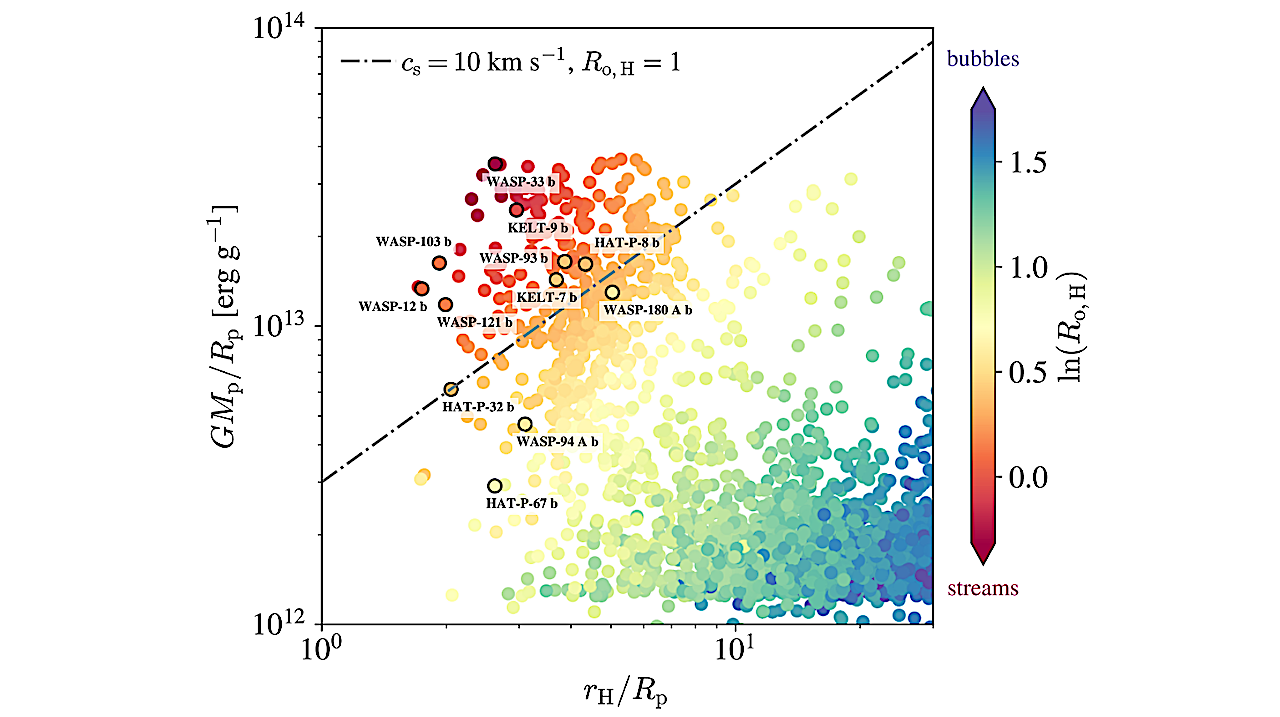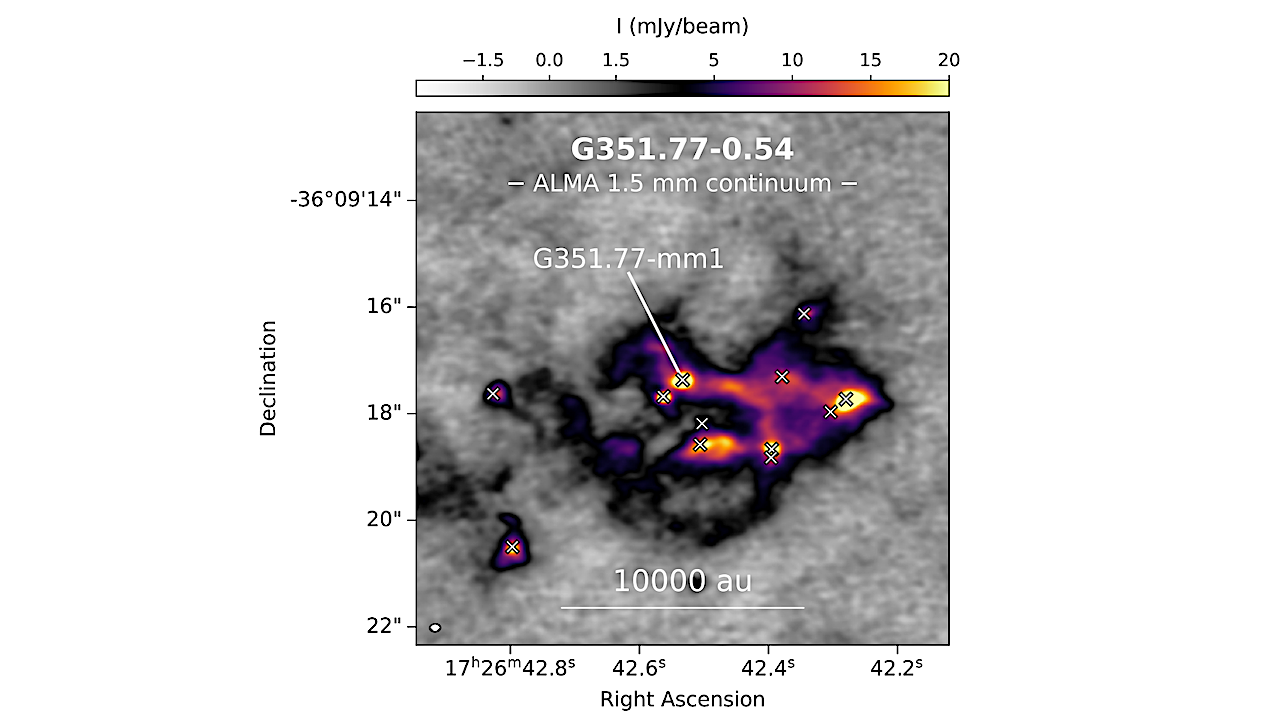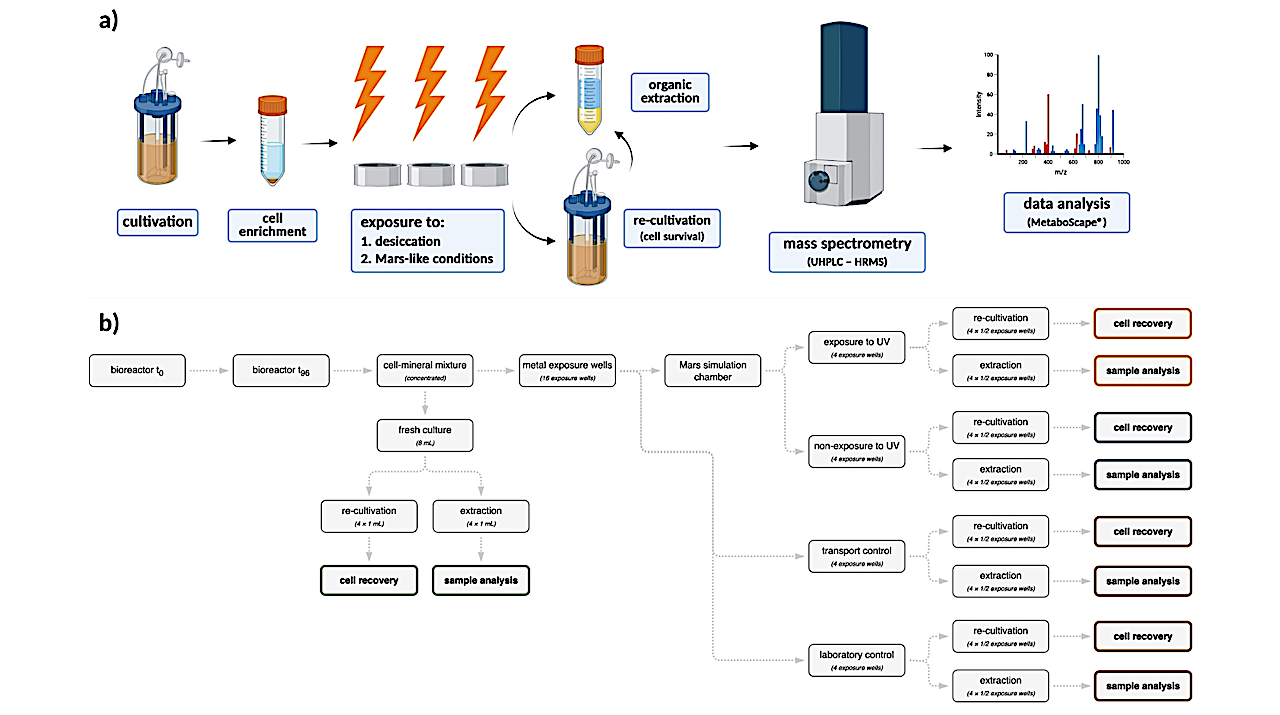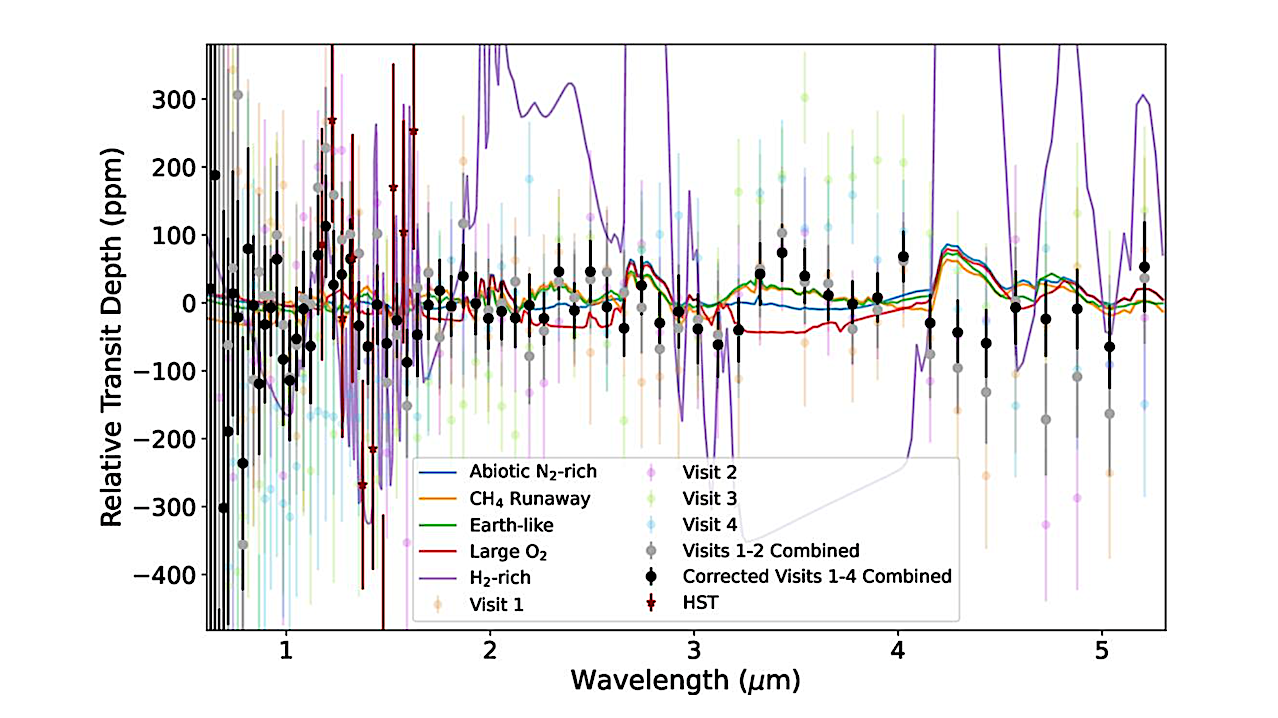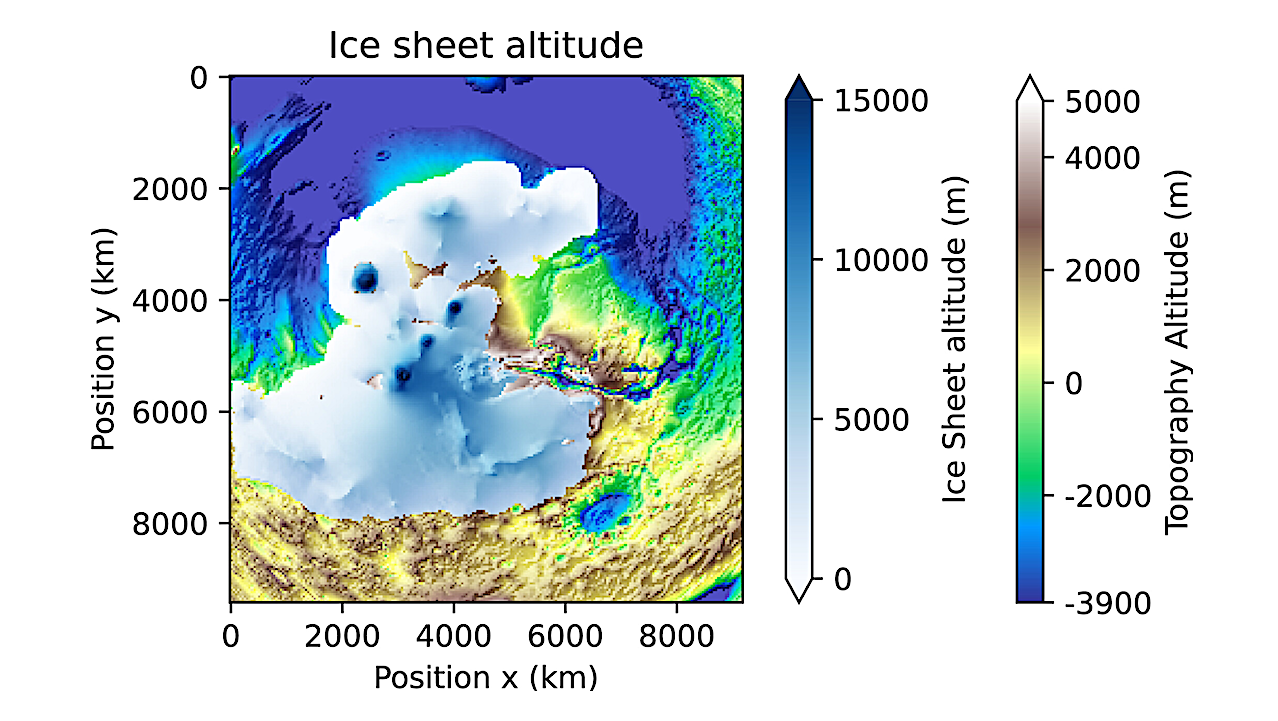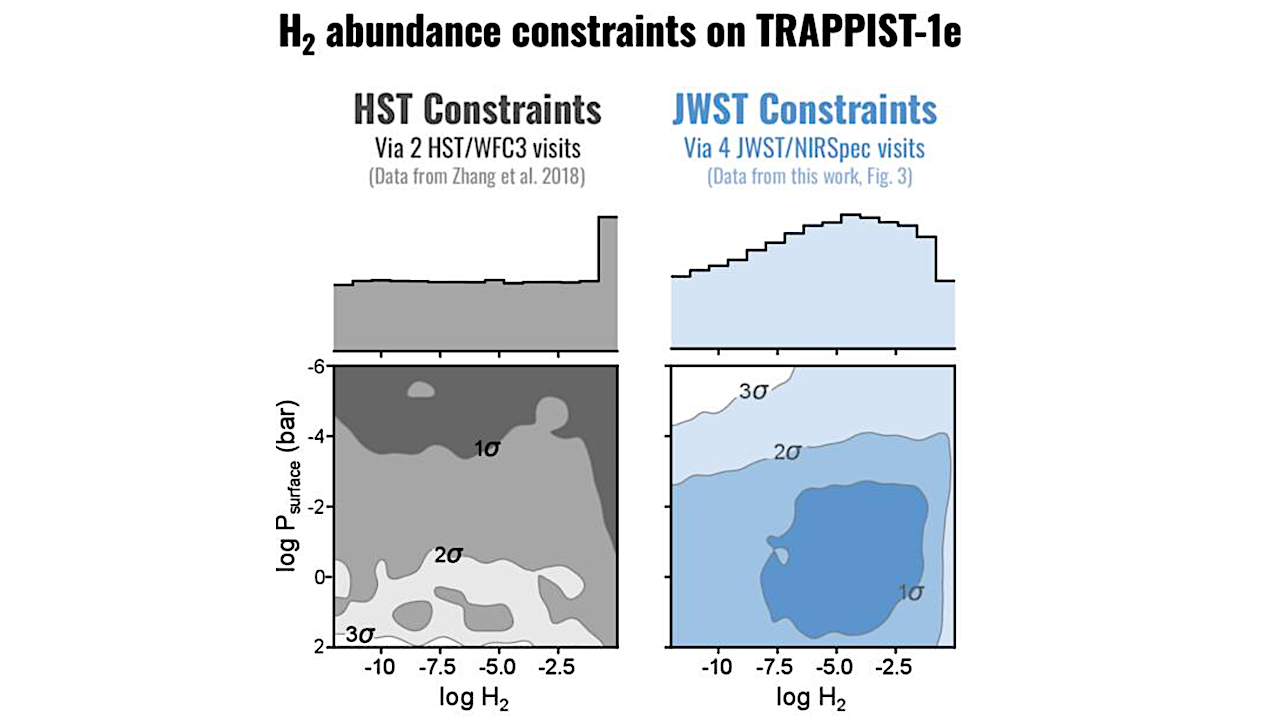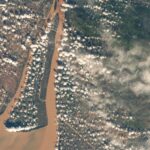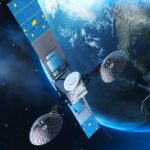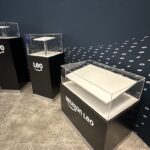Assembly of ribonucleoprotein condensates in response to Mars-like stress conditions. Credit Dhage et al. — Indian Institute of Science (IISc) Any life on Mars in the past, present, or future
Astrobiology44- Page
Image of the “Peachflya” abrasion spot, from Perseverance’s WATSON Camera on sol 1620. NASA/JPL-Caltech larger image Perseverance accomplished something unusual this week: abrading two dramatically different rocks within the span
Figure adapted from M. MacLeod et al. (2025) and compiled using PWMorphology. Colored circles represent confirmed exoplanets with radii greater than 1.6R⊕ from the sunset catalog shown as a function
ALMA 1.5 mm continuum emission towards the G351.77−0.54 star-forming region. Crosses mark the positions of the mm continuum sources identified by H. Beuther et al. (2019). The synthesized beam of
Overview of the workflow and experimental design. a) Workflow exposure experiment: Cultivation, followed by cell enrichment and deposition in the exposure wells to conduct 1. desiccation experiment, and 2. exposure
Keith Cowing Explorers Club Fellow, ex-NASA Space Station Payload manager/space biologist, Away Teams, Journalist, Lapsed climber, Synaesthete, Na’Vi-Jedi-Freman-Buddhist-mix, ASL, Devon Island and Everest Base Camp veteran, (he/him) 🖖🏻 Follow on
Foundation Models for Astrobiology Advances in machine learning over the past decade have resulted in a proliferation of algorithmic applications for encoding, characterizing, and acting on complex data that may
JWST NIRSpec PRISM transmission spectra compared with modeled atmospheric scenarios. The x-axis shows wavelengths in microns, while the y-axis shows the transit depth in parts per million. Each of the
Ice sheet topography computed by GRISLI (step RGRGRG). For this particular simulation, the ice sheet reaches the ocean and could potentially produce icebergs. The altitude here includes the isostasy that
H2 abundance constraints for TRAPPIST-1 e from HST and JWST as a function of surface pressure. Posterior distribution showcasing the improvement on constraints on possible H2-dominated atmospheres on TRAPPIST-1 e
-
 012024 in Review: Highlights from NASA in Silicon Valley
012024 in Review: Highlights from NASA in Silicon Valley -
 02Panasonic Leica Summilux DG 15mm f/1.7 ASPH review
02Panasonic Leica Summilux DG 15mm f/1.7 ASPH review -
 03From Polymerization-Enabled Folding and Assembly to Chemical Evolution: Key Processes for Emergence of Functional Polymers in the Origin of Life
03From Polymerization-Enabled Folding and Assembly to Chemical Evolution: Key Processes for Emergence of Functional Polymers in the Origin of Life -
 04How New NASA, India Earth Satellite NISAR Will See Earth
04How New NASA, India Earth Satellite NISAR Will See Earth -
 05And Thus Begins A New Year For Life On Earth
05And Thus Begins A New Year For Life On Earth -
 06Astronomy Activation Ambassadors: A New Era
06Astronomy Activation Ambassadors: A New Era -
07SpaceX launch surge helps set new global launch record in 2024


